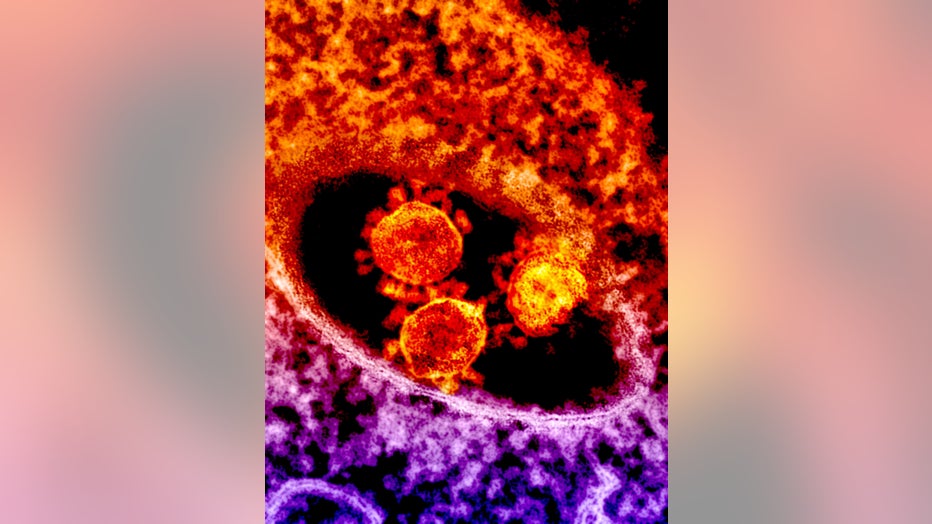UArizona scientists working to make coronavirus testing less invasive
UArizona scientists working to make coronavirus testing less invasive
Scientists at University of Arizona are hoping to some day test for COVID-19, simply by breath.
PHOENIX - As the COVID-19 pandemic continues, a team of scientists at the University of Arizona is looking to make COVID-19 testing easier.
The team has received grant money that could one day lead to detecting the coronavirus by just breathing.
"We have a lot of advantages, and we’re just trying to get to the point where it’s a commercial device that will be useful, and hopefully make a difference," said Assistant Professor Judith Su.
Su and her team received $1.82 million from the National Institute of General Medical Sciences to help advance testing technology. They already use a one-of-a-kind technology called Frequency Locked Optical Whispering Evanescent Resonator (FLOWER).
"It’s a platform technology, in that it can be adapted to sensing a lot of different things," said Su. "So in our lab, we sense performance-enhancing drugs, we sense biomarkers for cancer, Alzheimer's. So really, what we are doing now is just adapting it to sense SARS-CoV-2 in the air."
SARS-CoV-2 stands for "Severe acute respiratory syndrome coronavirus 2." According to the Mayo Clinic, SARS-CoV-2 is the virus that causes COVID-19.

A highly magnified, digitally colorized transmission electron microscopic (TEM) image showing a coronavirus (National Institute of Allergy and Infectious Diseases (NIAID))
Su says they are hoping to build a non-invasive sensor that can detect illnesses like COVID-19 through the breath.
"I think a way to really quickly and accurately diagnose people and let them know what their disease state is without having to wait two weeks would really help save lives," said Su.
Currently, their devices operate in a research setting, but the hope is to one day create a device that will be in the hands of people.
"Ultimately, we’re hoping to get this to some sort of portable device, where it’s integrated with our cell phone and there is this attachment where you can put a drop of blood, or you breathe on it and you get a really easy readout, like a green light for yes or a red light for no," said Su.
Tune in to FOX 10 Phoenix for the latest news
Get the latest coronavirus news by downloading the FOX 10 News App. Our promise is that our alerts are there to inform you - not scare you.
On CoronavirusNOW.com, you'll find extensive coverage about COVID-19, including breaking news from around the country, exclusive interviews with health officials, and informative content from a variety of public health resources.
COVID-19 symptoms
Symptoms for coronavirus COVID-19 include fever, coughing, and shortness of breath. These, of course, are similar to the common cold and flu.
Expect a common cold to start out with a sore or scratchy throat, cough, runny and/or stuffy nose. Flu symptoms are more intense and usually come on suddenly, and can include a high fever.
Symptoms of COVID-19 may appear more slowly. They usually include fever, a dry cough and noticeable shortness of breath, according to the World Health Organization. A minority of cases develop pneumonia, and the disease is especially worrisome for the elderly and those with other medical problems such as high blood pressure, obesity, diabetes or heart conditions.
RELATED: Is it the flu, a cold or COVID-19? Different viruses present similar symptoms
COVID-19 resources
Why social distancing can save lives amid COVID-19 pandemic
Social distancing is not only about preventing the illness itself, but rather, slowing the rate at which people get sick.
CDC Website for COVID-19
https://www.cdc.gov/coronavirus
https://espanol.cdc.gov/coronavirus/2019-ncov/index.html (In Spanish/En Español)
AZDHS Website for COVID-19
https://www.azdhs.gov/preparedness/epidemiology-disease-control/infectious-disease-epidemiology/es/covid-19/index.php#novel-coronavirus-home (In Spanish/En Español)

